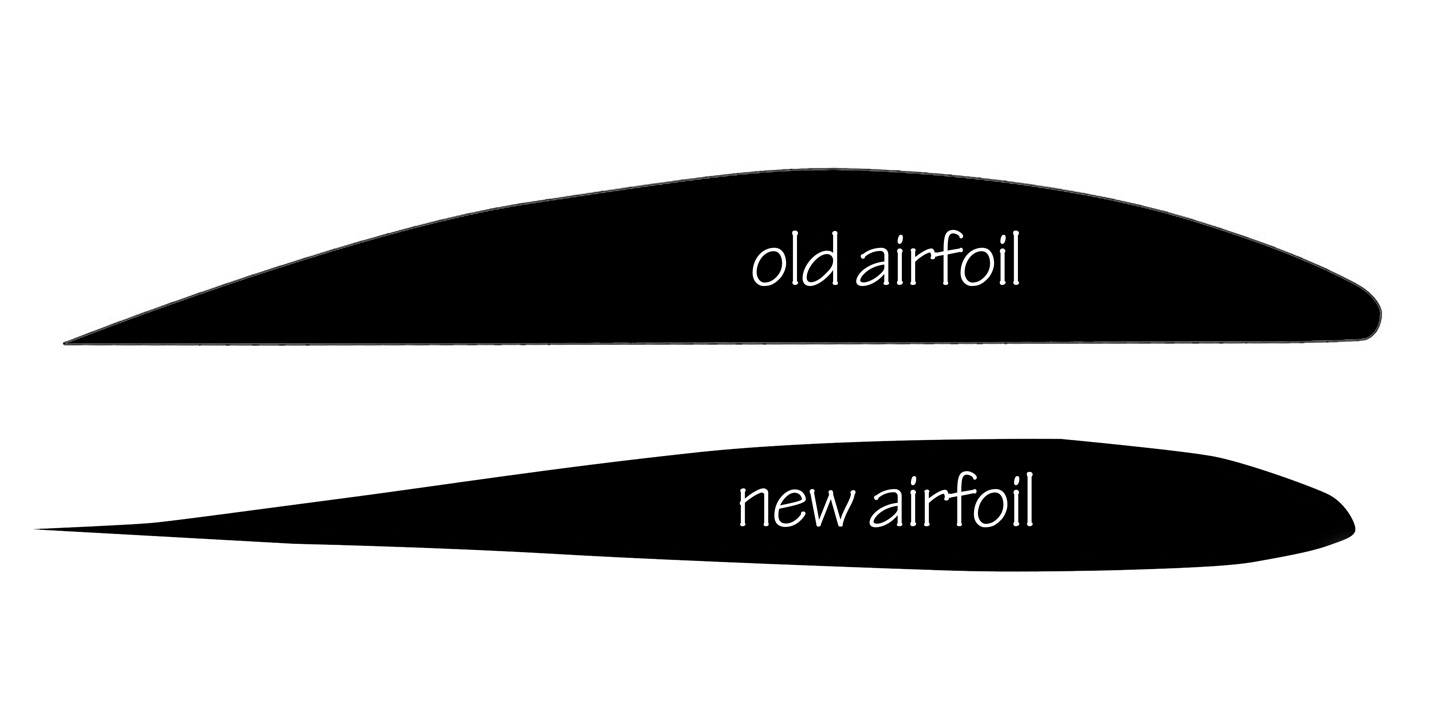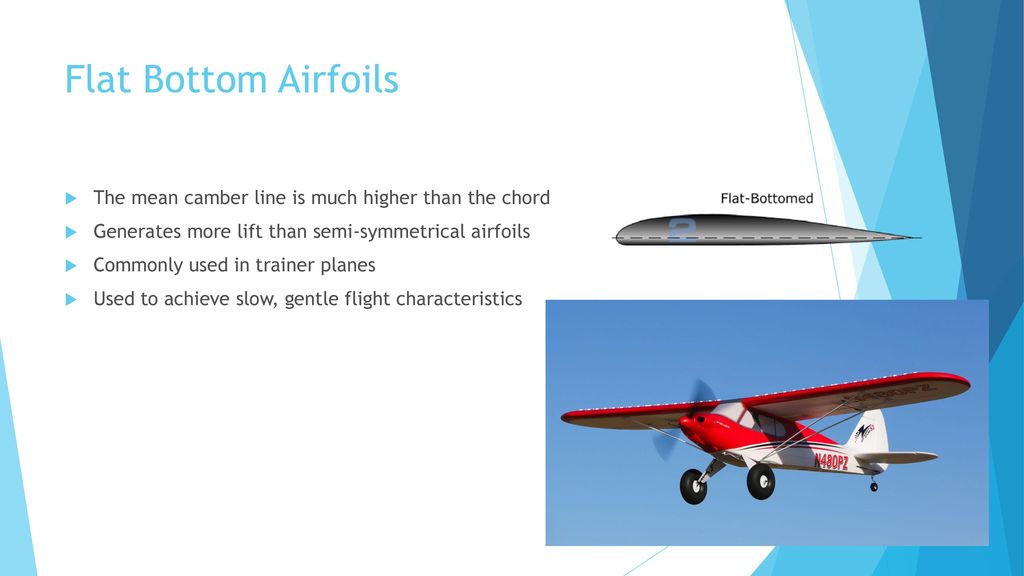

The shape of the wing when looking at its profile. ~ ( AEROFOIL)- A structure shaped to obtain an aerodynamic reaction in the air, thus affecting the performance of the aircraft.ĪIRFRAME - An aircraft's structure, without power plant and systems.
FLAT BOTTOMED AIRFOIL LICENSE
What pilots wrap their sandwiches in.Īirframe - When the FAA inspector knows that you have only a student license and sends his kids to bum a ride with you in the plane. Often used to settle disputes between crew members and passengers. They are suited to rotary-wing applications because they have almost no center of pressure travel. Symmetrical ~s have identical upper and lower surfaces. ~ sections are of two basic types, symmetrical and nonsymmetrical. An intelligent discussion of the factors affecting the magnitude of rotor blade lift and drag requires a knowledge of blade section geometry. Rotary-wing ~s operate under diverse conditions, because their speeds are a combination of blade rotation and forward movement of the helicopter. Its characteristics are Center of Pressure (CP), DRAG (CD), LIFT (CL), Lift-Drag Ratio (L/D), and Moment (CM). The shape of any flying surface, but principally a wing, as seen in side-view ("cross-section"). Source: Pilot Handbook of Aeronatical Knowledge.

The airflow and pressure patterns for such an ~ are shown in figure 3.13.Īny surface, such as a wing, propeller, rudder, or even a trim tab, which provides aerodynamic force when it interacts with a moving stream of air. Wings, horizontal tail surfaces, vertical tails surfaces, and propellers are all examples of airfoils.Ī symmetric ~, where the top surface is a mirror image of the bottom surface, has zero camber. When an airfoil is moved through the air, it is capable of producing lift. The airfoil shape and variations in angle ofĪttack are primarily responsible for the lift and profile drag of the wing.Īn airfoil is a device which gets a useful reaction from air moving over its surface.

An airfoil is the cross section of a wing.


 0 kommentar(er)
0 kommentar(er)
